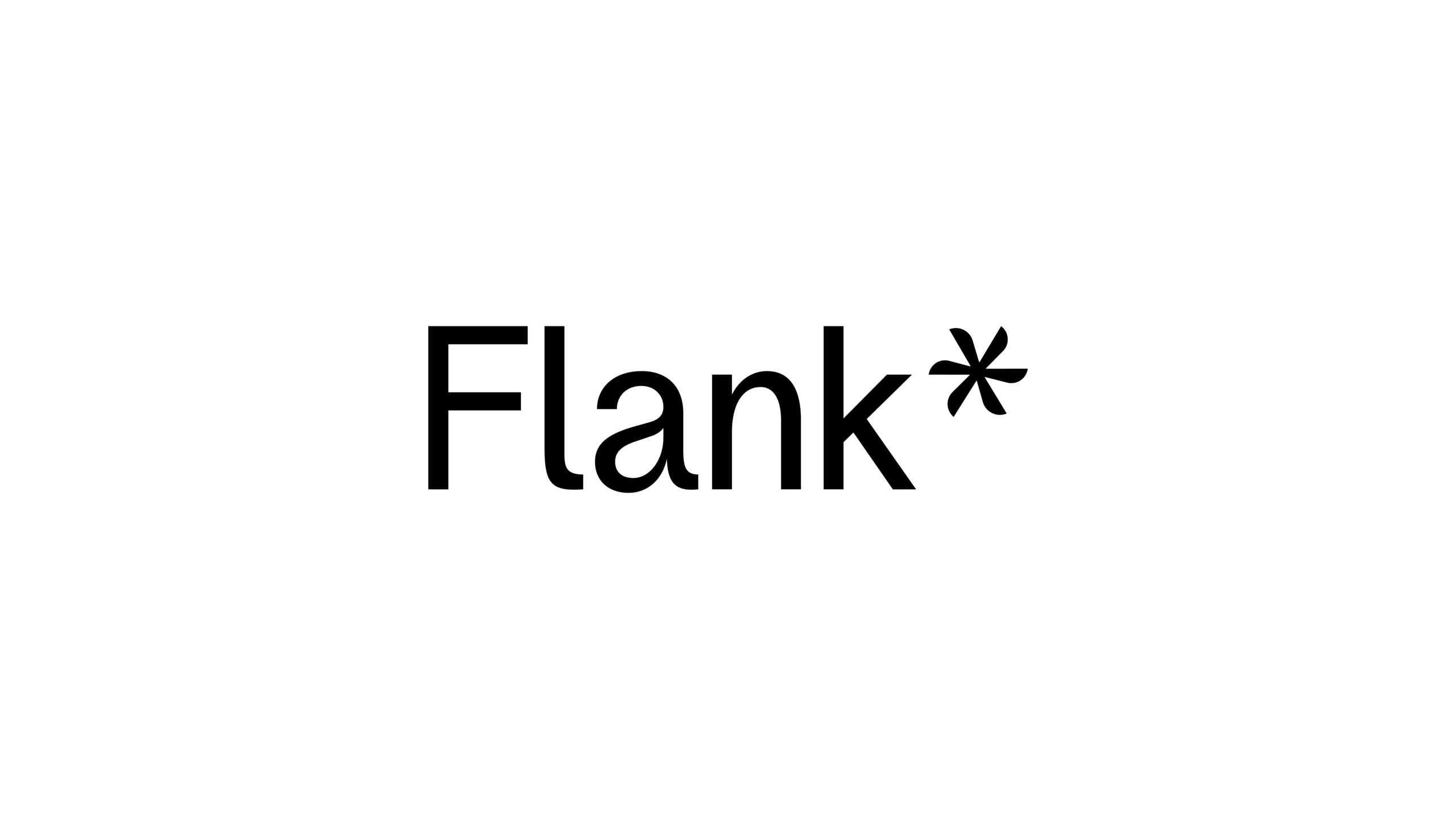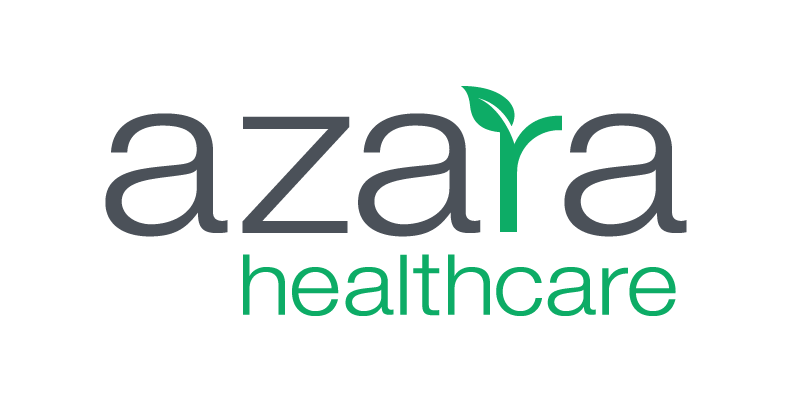Go-To-Market Strategies from Insight’s Scaling 2020 Summit
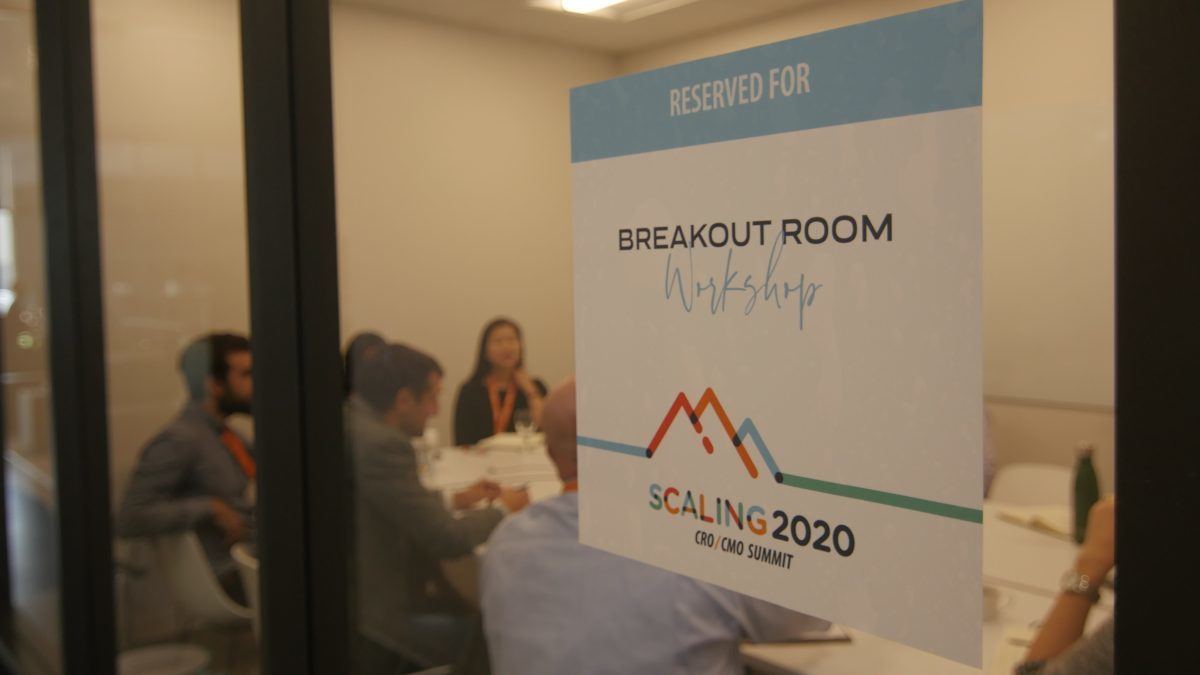
Insight Partners recently hosted its Scaling 2020 Summit in Denver on Sep. 17-18 at the stunning headquarters of Insight portfolio company, Conga. Over two days, we brought together more than 75 CMOs and CROs, as well as Insight partners, industry experts, and even an Olympic champion.
Scaling 2020 isn't your typical conference. The agenda and workshops are tailored to the specific needs of Insight portfolio companies. This ensures that each session gets to the root of a relatable challenge or opportunity, allowing CMOs and CROs to develop go-to-market strategies that succeed.
An event filled with actionable information
Attendees could choose two out of ten tactical workshops to attend. Those included:
- Closing the Board Gap
- Strategic Pricing
- New Market Entry
- Outsourcing Sales Teams
- Customer Segmentation
- Account-Based Initiatives
- Leveraging Intent Data
- Winning Top Sales Talent
- Scaling your GTM Tech Stack
- Building a Strategy
Let's recap a bit of what went on in each:
1. Closing the Board Gap
Led by Gary Survis, Operating Partner for Insight Onsite, and Whit Rothe, Director of Marketing for Insight Onsite, the "Closing the Board Gap" workshop walked through problems CMOs and CROs typically encounter in interactions with the board and how they can bridge that divide.
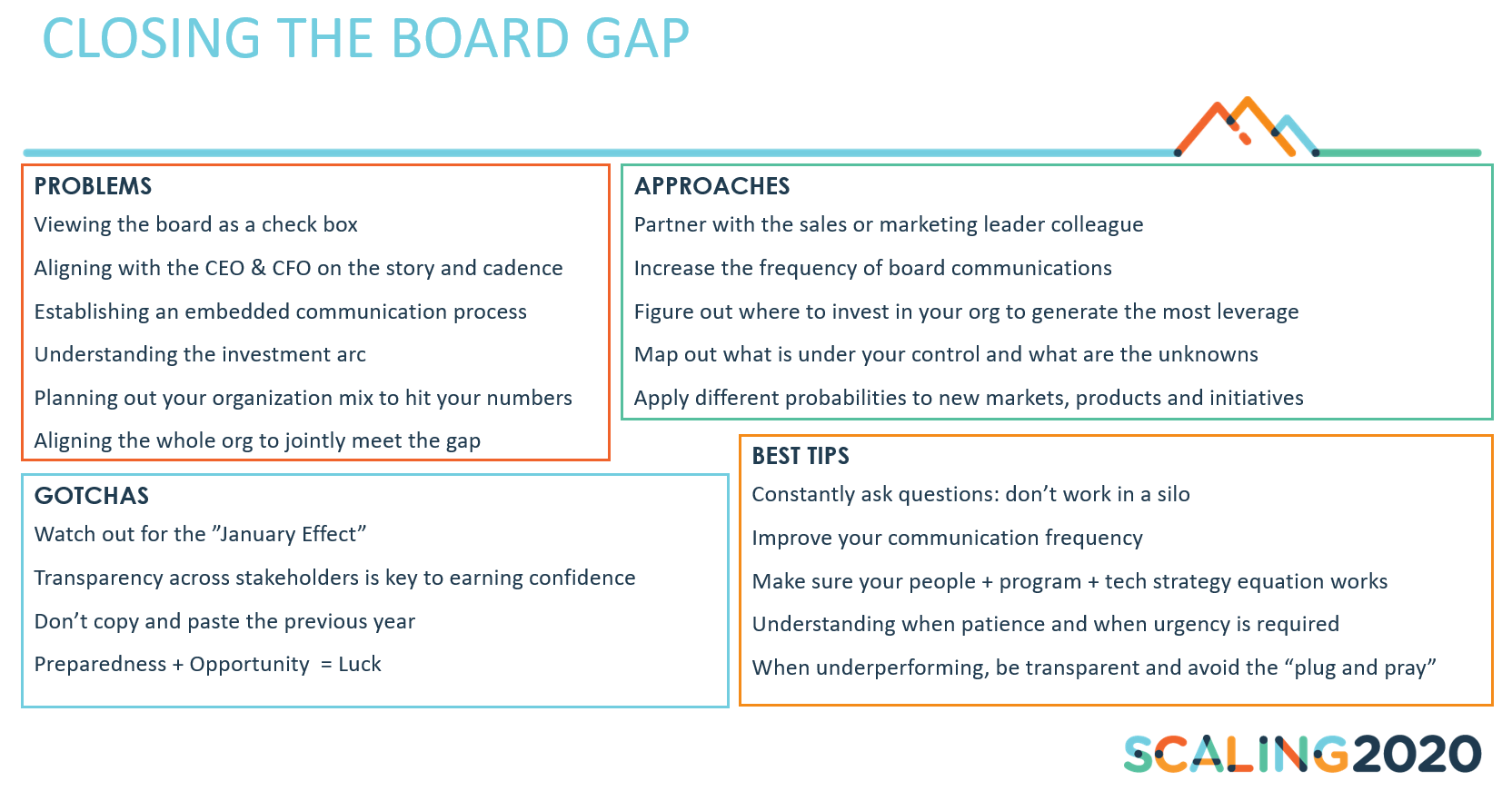
Issues included viewing the board as a box to check, rather than a strategic partner. Inconsistent communication — sometimes both the symptom and the cause of a gulf with the board — was singled out as a problem to rectify. Not only should CMOs and CROs increase the frequency of communications, but also work with CEOs and CFOs to get the story and message about the investment arc right.
Attendees left with the takeaway that they should always be asking questions.
- When is patience with the board the right approach, and when is urgency?
- What is within our control, and what's not?
- How is 2020 different from 2019 and what do we need to do to prepare?
2. Strategic Pricing
Rachel Geller, Managing Partner for Insight Onsite, and James Wood, Vice President for Pricing Strategy at Insight, teamed up to present about strategic pricing.
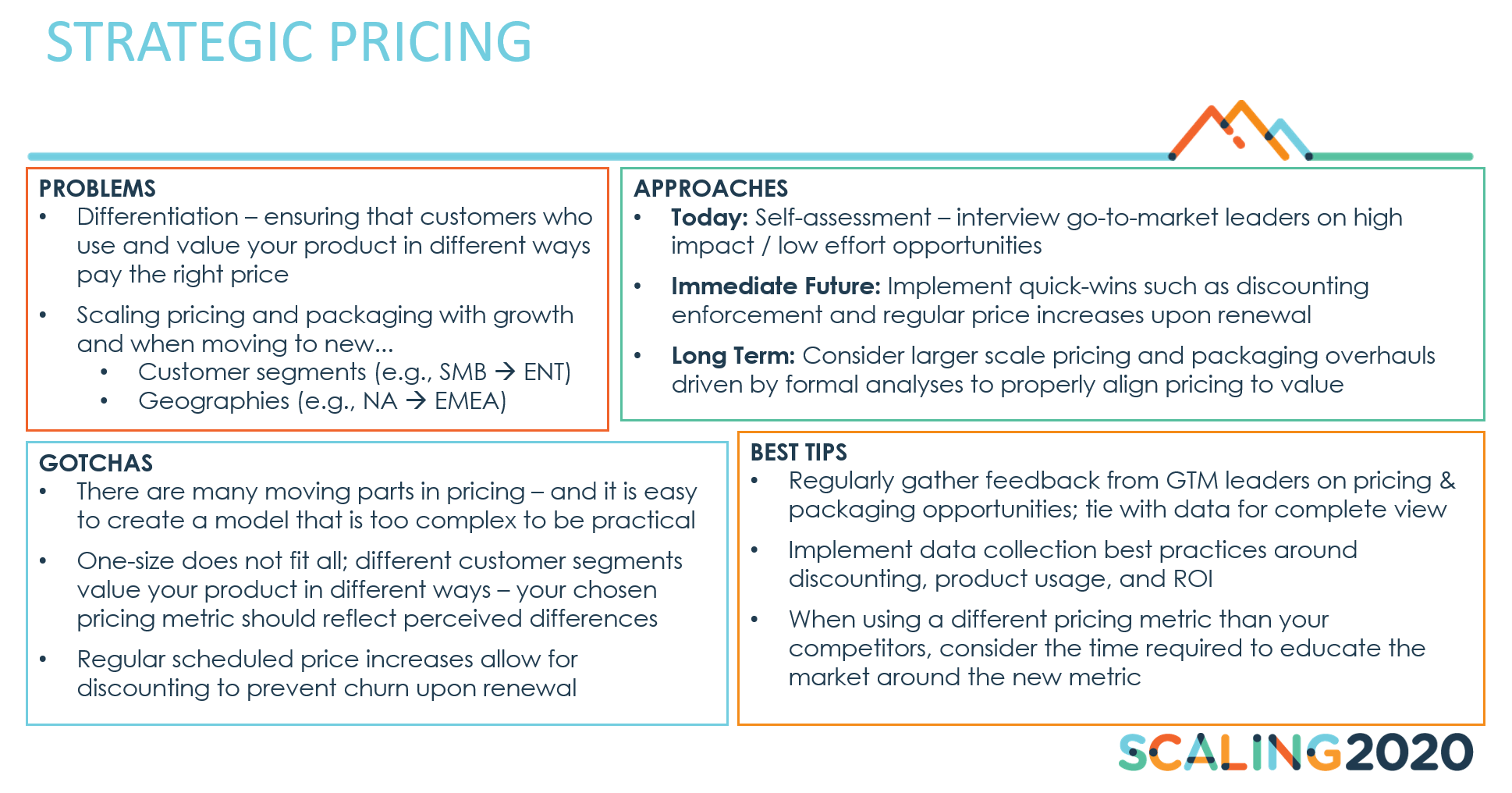
Price underpins so many strategic decisions and it's important that businesses have a model that is responsive, built on feedback and data, and scaled up in a way that limits churn.
To do this, the workshop leaders gave those listening a framework for approaching the strategy of pricing:
- Self-assess in the now; interview GTM leaders on high-impact/low-effort opportunities.
- Implement quick wins for the immediate future; leverage discounting or price step-ups at renewal.
- Consider initiatives for long-term aligning of pricing and value
Some of the top tips that were shared include consulting with GTM leaders on packaging overhauls and leveraging data from discounting, product usage and ROI.
3. New Market Entry
International markets can offer wide opportunity for new market expansion and revenue creation. However, setting up shop in a different country can be as hard as it sounds.
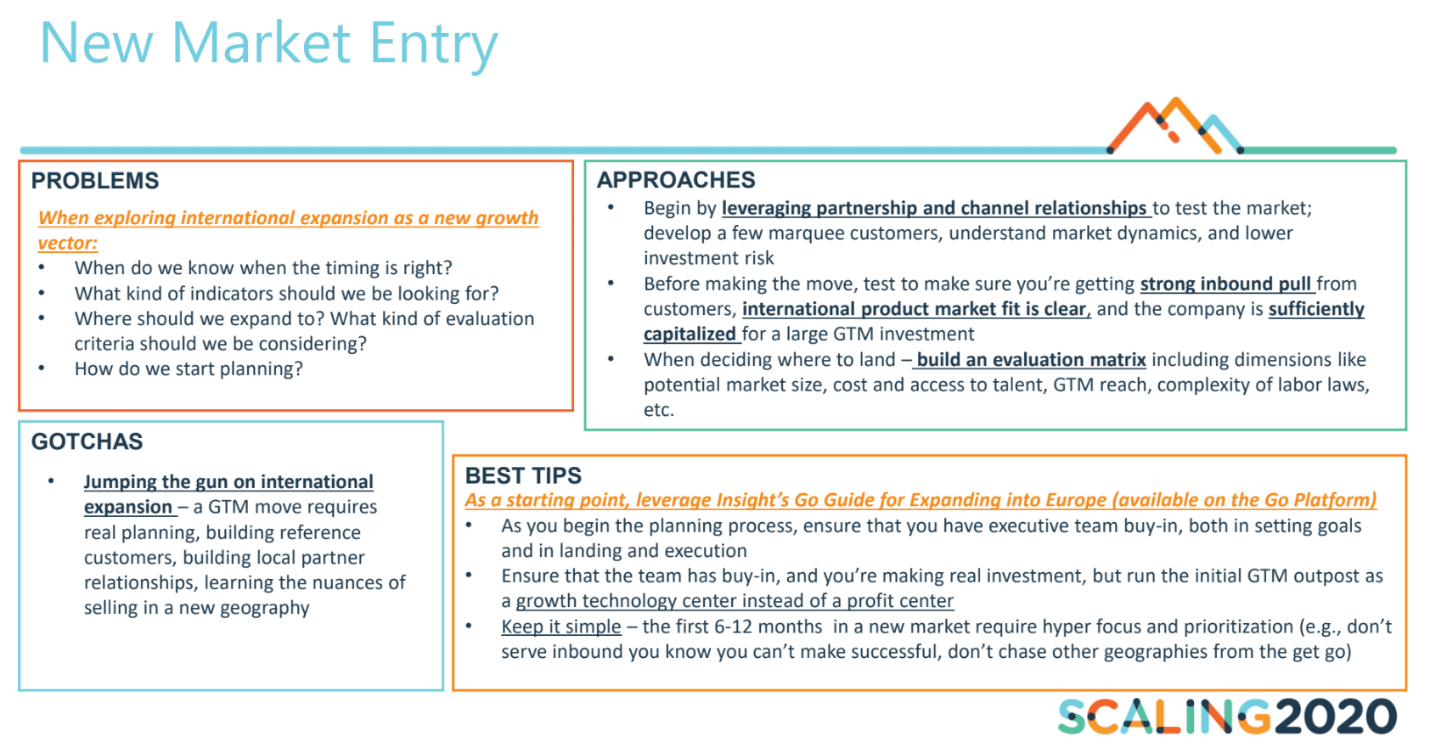
Philine Huizing, Senior Investment Associate at Insight, tackled some of the most pressing questions surrounding international expansion and what strategies work for cross-border scaling up.
Huizing recommended starting out by testing the market and understanding its dynamics, eventually building up to move into the market — but only if strong inbound pull and market fix are clear and there is sufficient capitalization. From there, build an evaluation matrix that considers market size, access to talent, GTM reach and complexity of labor laws, among other core variables.
Some of the input we got from attendees when asked about real challenges they've faced before included poor translation of marketing materials and support as an afterthought. Harmonizing the cultures of the company and the locality was another big topic of discussion.
4. Outsourcing Sales Teams
Looking to drive sales productivity? Travis Kassay, Senior Vice President for Insight Onsite Sales Center of Excellence, and Greg Casale, Founder & CEO of Reveneer, talked about outsourcing in the context of the fundamental question: to build or to buy?
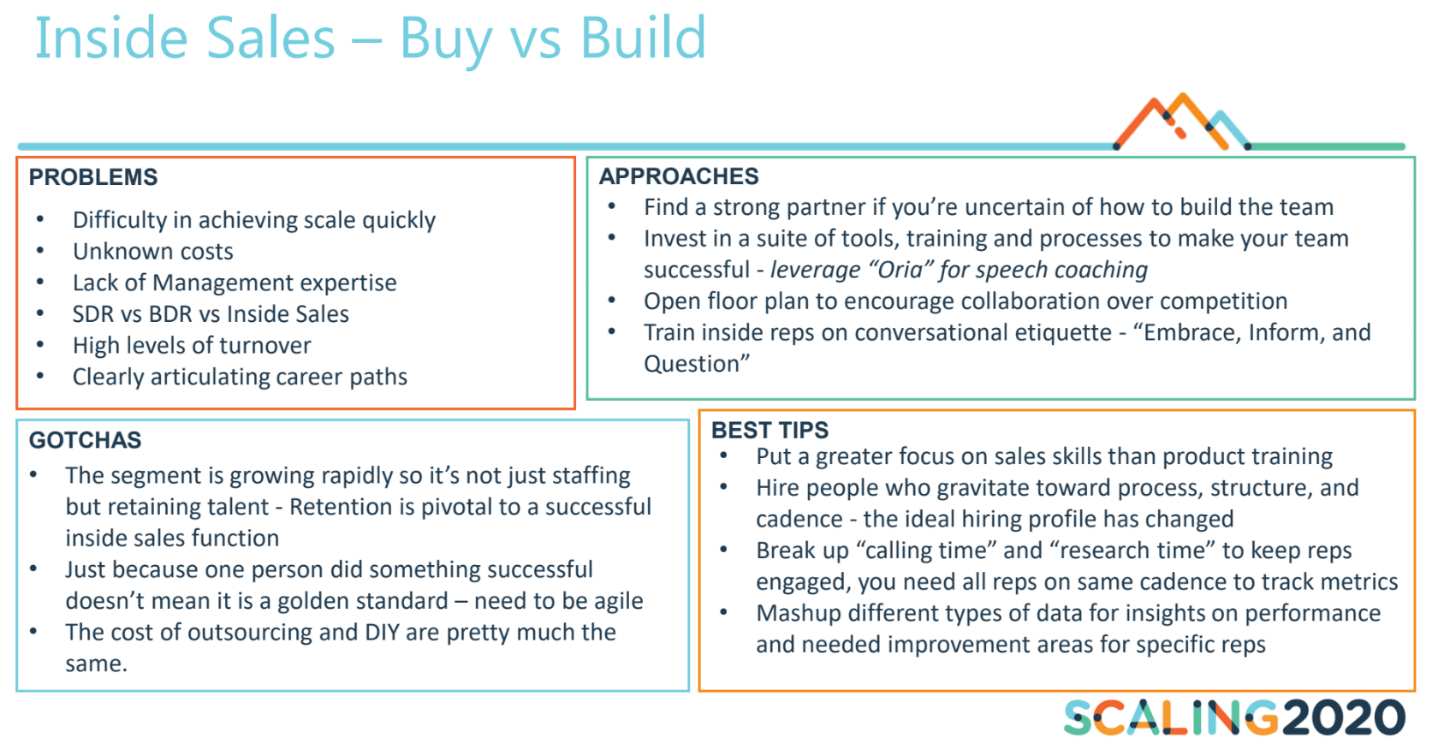
As it relates to inside sales, Kassay and Casale, whose company builds and executes custom inside sales operations, talked about the challenges businesses face in scaling up, and how outsourcing may be the engine with which to drive the needed productivity.
The trick is in treating outsourcing not simply as hiring, but also training and retention. A focus on skills and support is key to generating productivity and value from inside sales, but factors like unknown costs, lack of management expertise and turnover are all points to address.
5. Customer Segmentation
The general feeling about customer segmentation is that everybody knows they should be doing it, but isn't exactly sure how to.
To help with the subject, a trio of experts — Pablo Dominguez, Operating Partner for Insight Onsite and Mike Hoffman and Ellen Wade from Sales Benchmark Index walked the group through the obstacles to segmentation and the opportunities it holds.
Challenges like gaps in data and lack of cohesive strategy were broken down, while solutions focused on achieving cross-functional alignment and not taking a one-size-fits-all approach.
In the end, there are three primary segments to consider: market, account and buyer. Assess each customer through these lenses.
6. Account Based Initiatives
Account-based marketing is a dominant trend in modern sales, which made it a perfect topic for Charlene Chen, Senior Vice President for Insight Onsite, and Eric Wittlake, B2B Research Analyst and Advisor at TOPO, to discuss with the group.
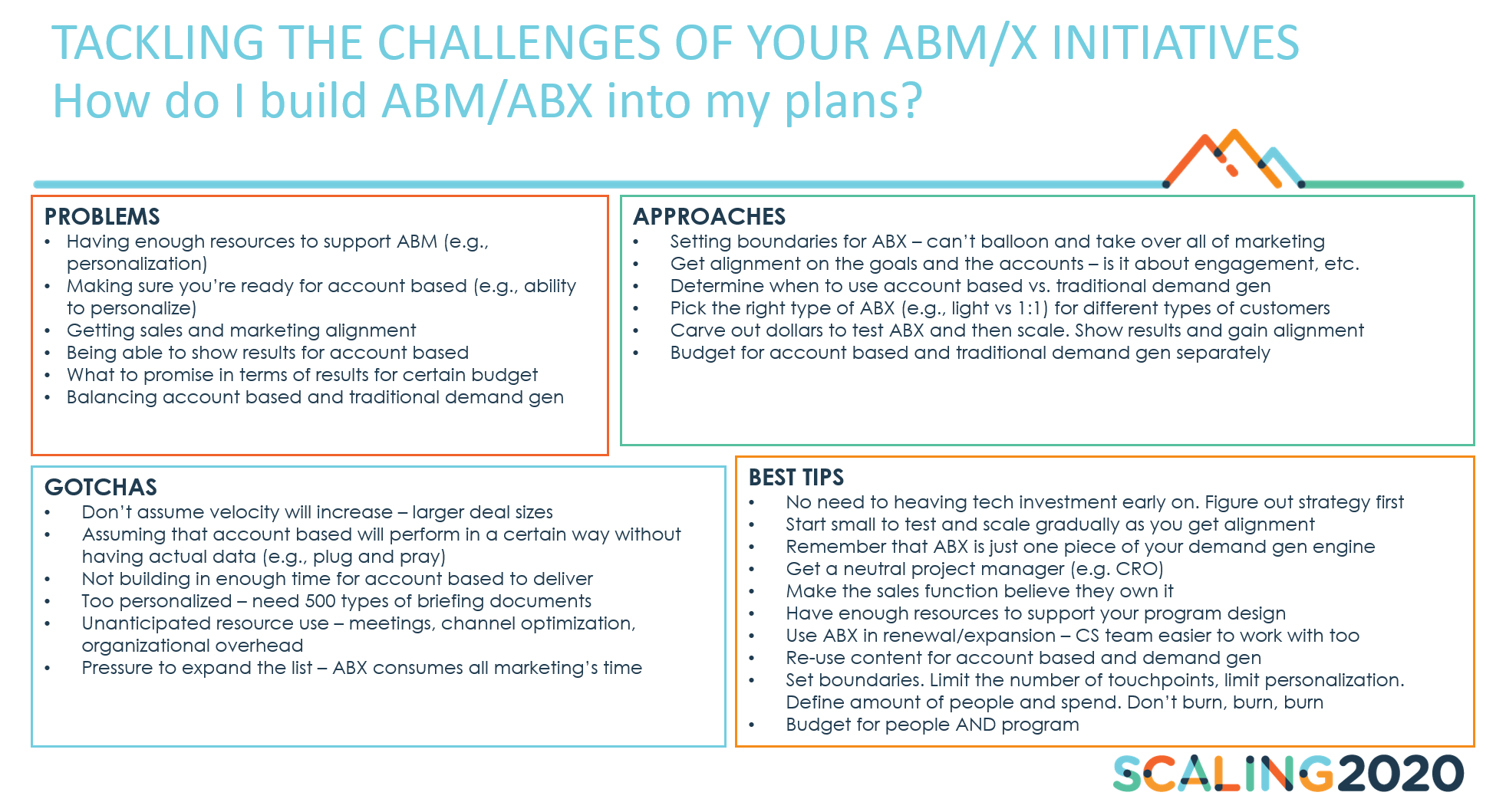
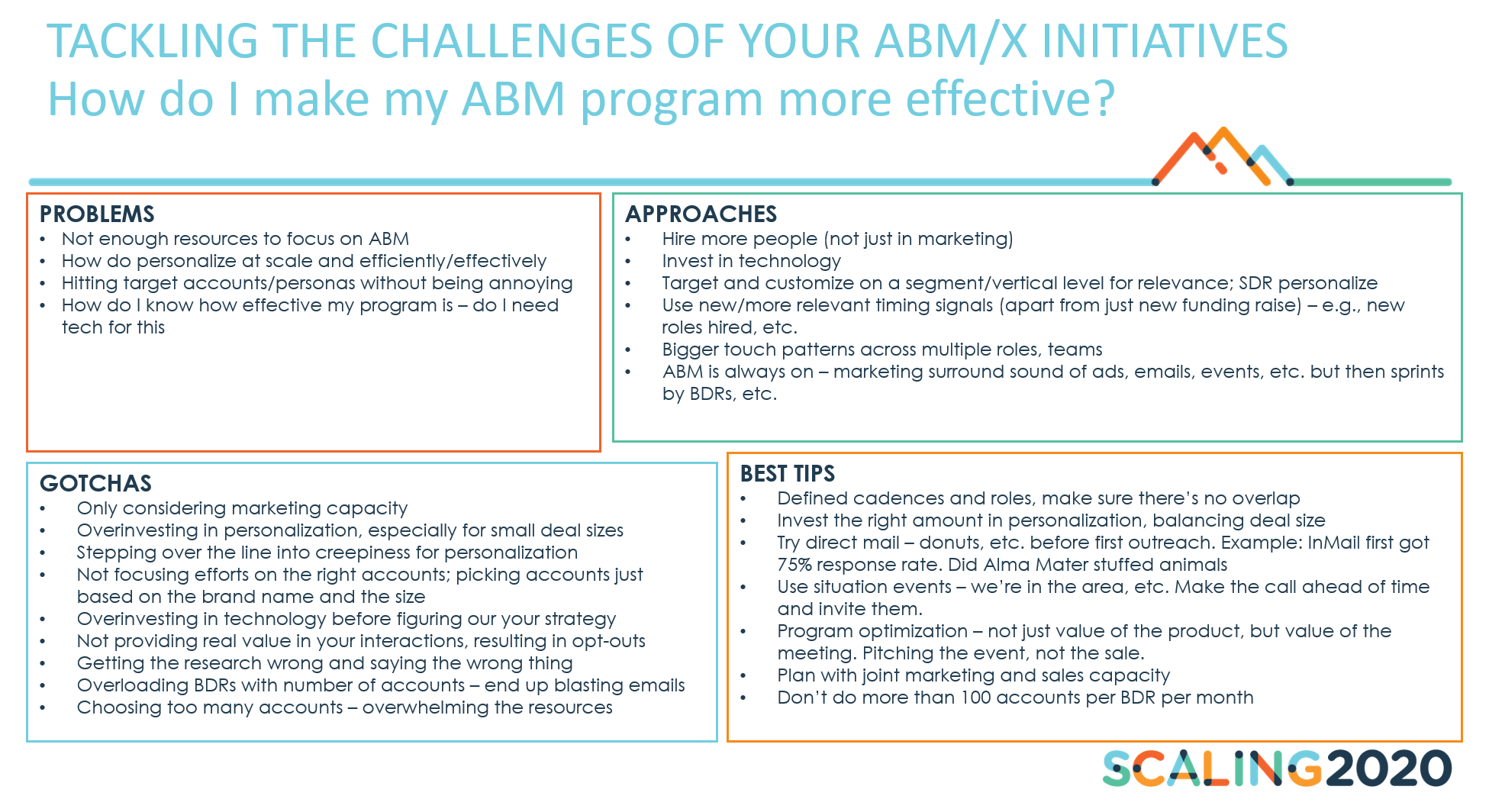
There was no shortage of talking points, but the conversation was broadly built on two pillars:
- How to build account-based initiatives into 2020 plans.
- How to make ABM more effective.
Regarding the former, hammering out strategy and aligning sales and marketing were important to getting account-based initiatives off the ground. Once the resources are lined up, consideration turns to what technology to invest in and which accounts to select. Just remember, start small and build it up.
7. Leveraging Intent Data
While intent data can be complex to analyze, it is a particularly powerful asset for your sales. To help attendees better understand what intent data is and how to best leverage it for results, another three-headed team of geniuses assembled, including Meg Fitzgerald Vice President for Insight Marketing Centers of Excellence, Mike Burton, Senior Vice President of Data Sales at Bombora, and Mike Madden, Head of Commercial Demand Generation at Adobe.
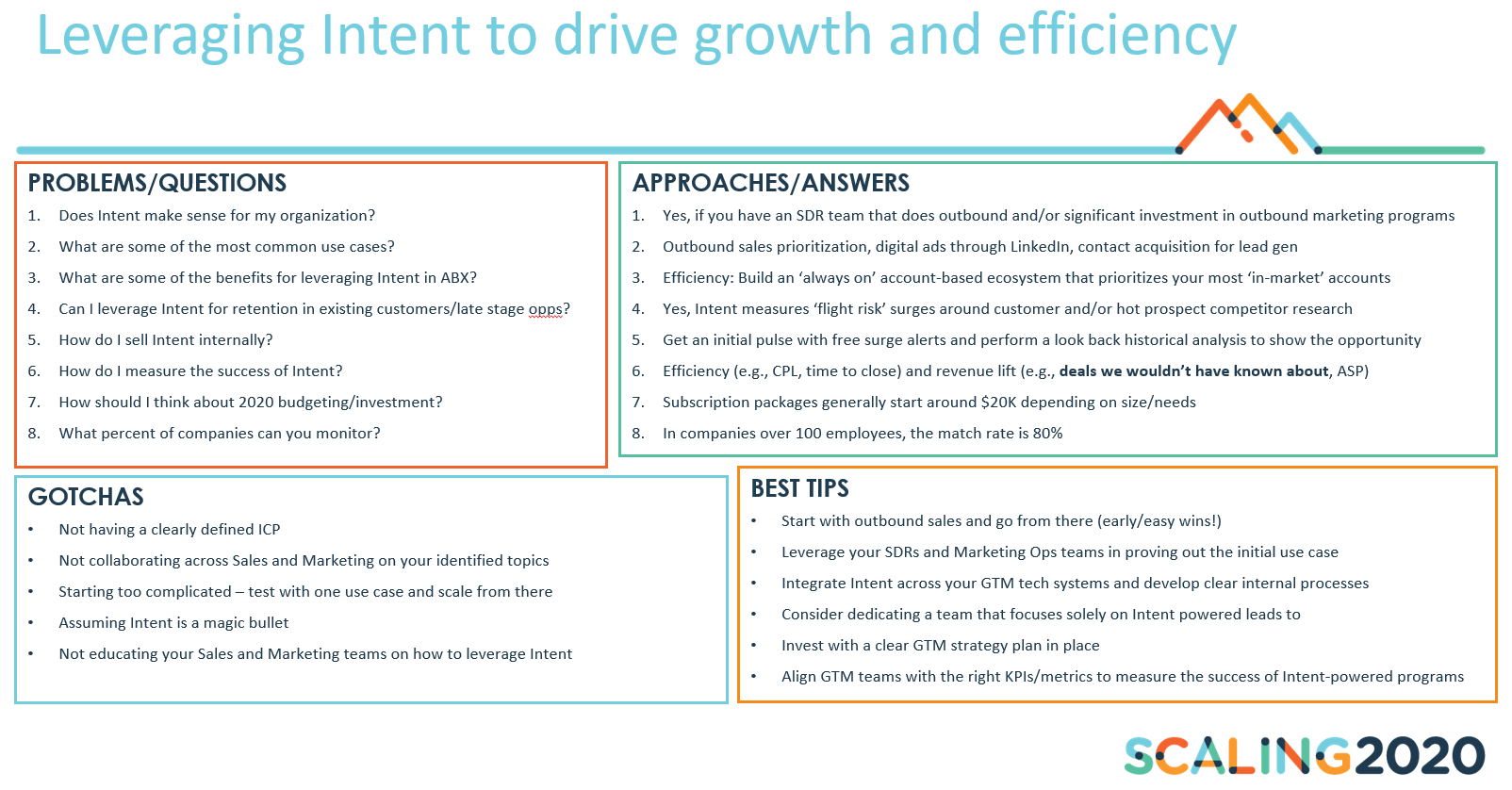
Before getting into the weeds of intent data, it's important decision-makers ask questions like "What are common use cases of intent data?" and "How do I measure the success of intent-based marketing?" The key is to take it slow, but not at a snail's pace; just enough to ensure you have all the bases covered and have identified a specific use case.
From there, folding intent data into your GTM strategy takes dedicated oversight and constant monitoring to ensure success.
8. Winning Top Sales Talent
Jenna Sigman and Mark Kapnick both work in the Insight Talent Centers of Excellence, so who better else to lead the workshop on how to win top sales talent?
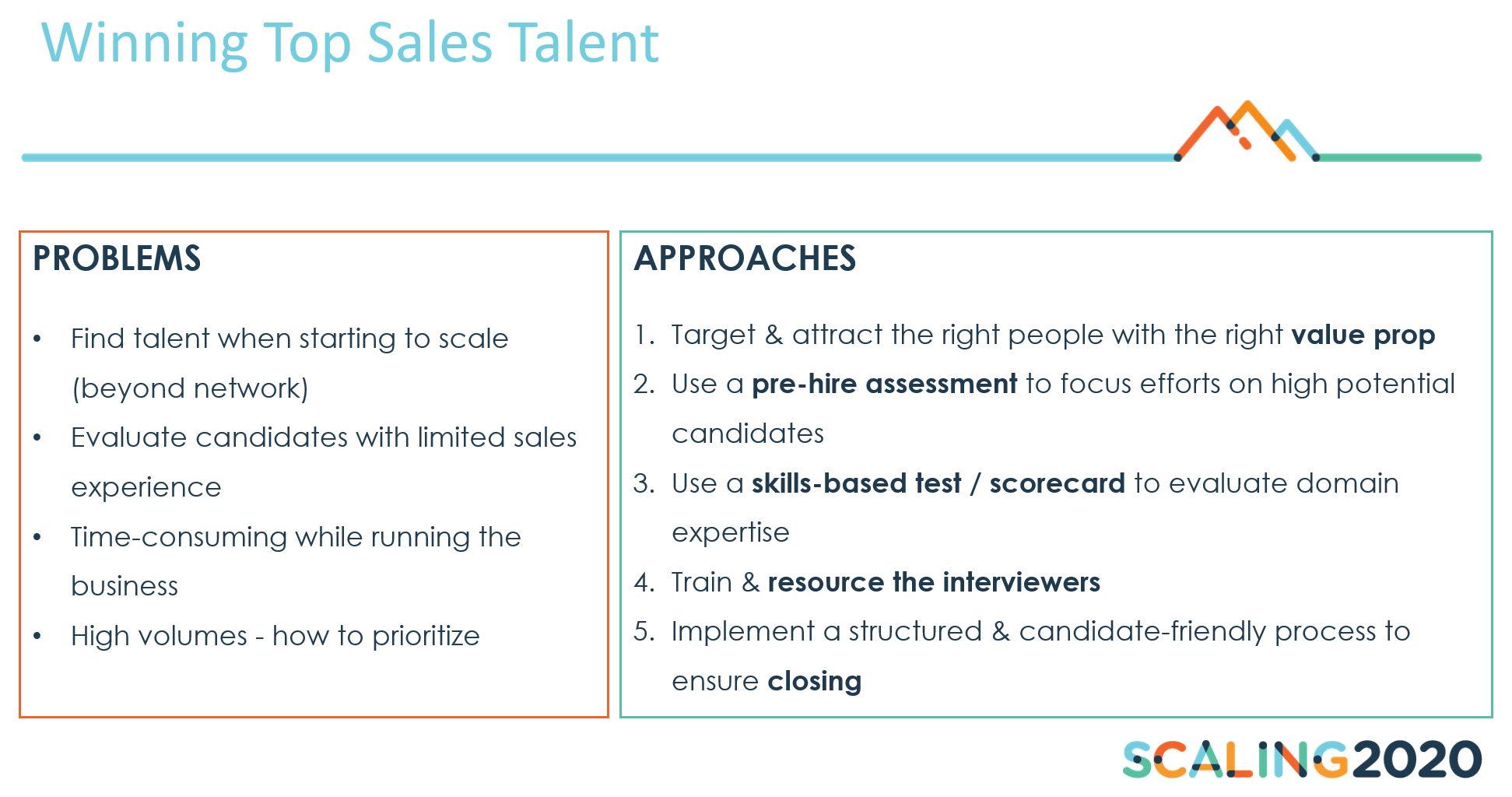
While overthinking hiring is easy, the strategy for winning top sales talent is a simple one. Yet there are common challenges most leaders encounter, like not having enough time in the day for evaluating candidates at scale.
To attract, secure and retain talent, you need:
- The right value prop and an enjoyable candidate experience.
- Streamlined workflows (e.g. pre-hire assessments).
- Skill-based testing and trained interviewers.
9. Scaling Your GTM Tech Stack
Investing in the right technology is of the utmost importance, but how do you build a tech stack you can scale with?
That's the central question tackled by the triumvirate of Lydia Chen, Senior Onsite Associate for Insight, Adrian Barke, and Ryan Vong, founder of Digital Pi.
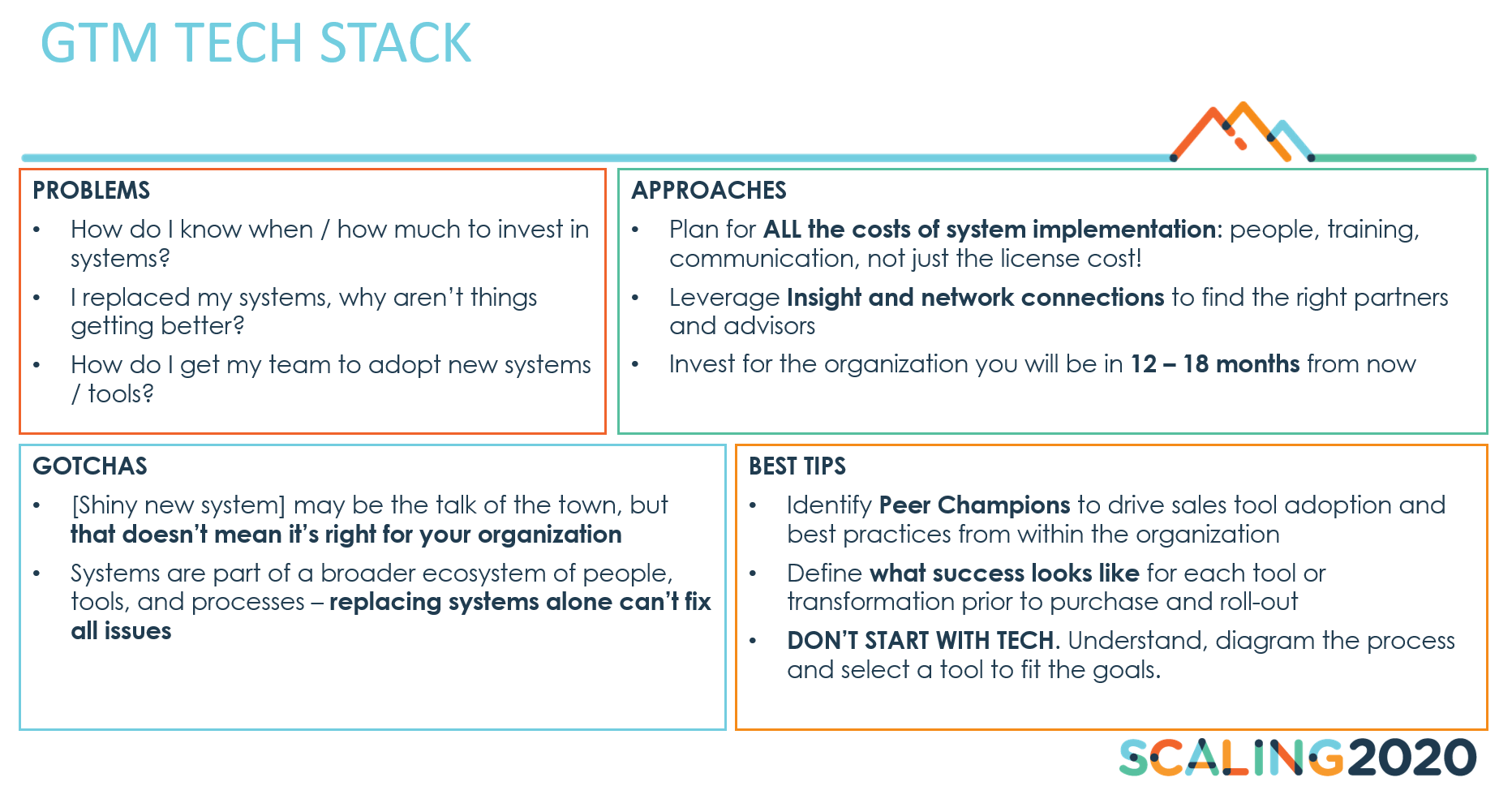
Among the most important takeaways:
- Planning for all the costs; that means everything from people to training and licensing.
- Try to invest in a tech stack that supports the company you want to be in 12-18 months.
10. Building a Strategy
This workshop was led by Nalaine Nath, Senior Director of the Insight Sales Centers of Excellence, and Matt May, Founding Partner at Stratechia, and was about putting all the pieces together to create a 2020 strategy that works.
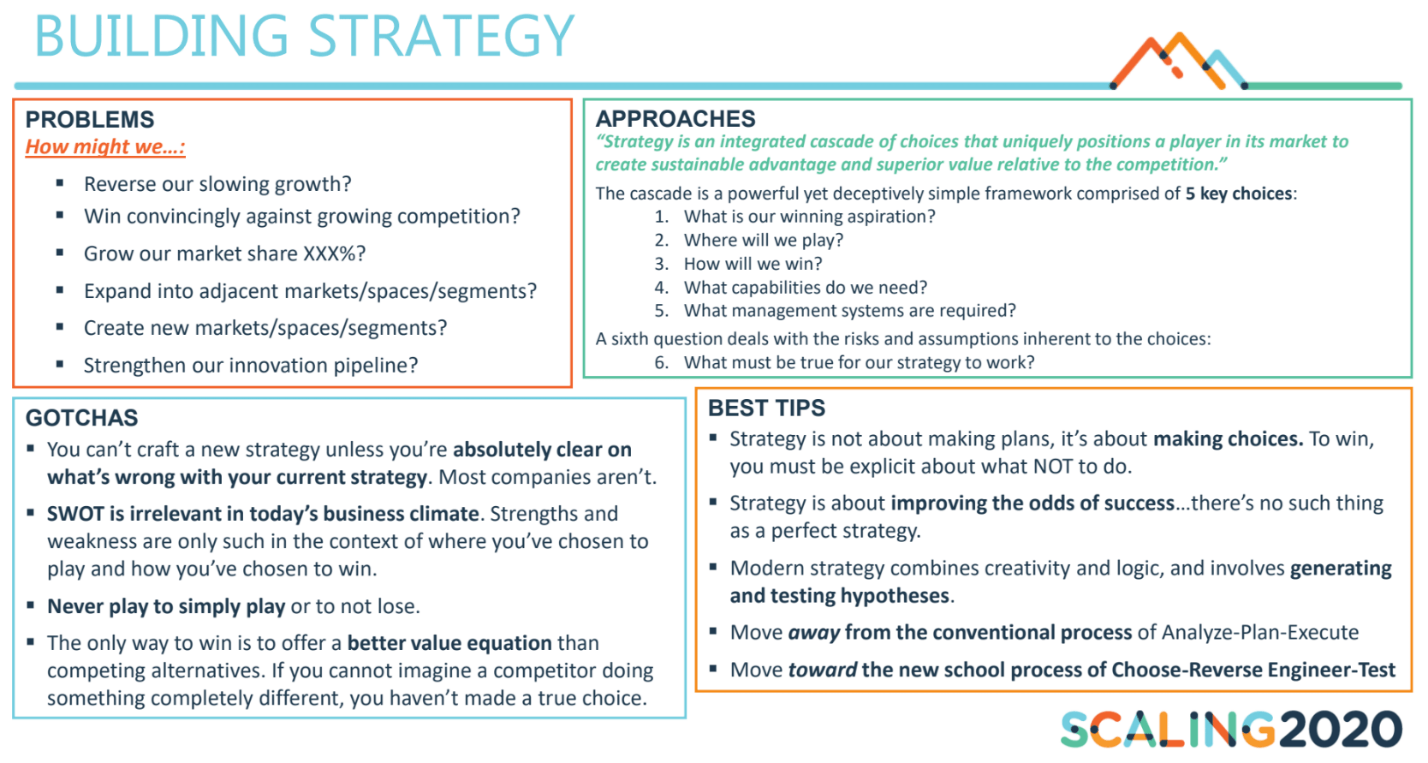
A lot of the session focused on the methodology of strategic decision-making. For instance, framing strategy as a cascade of choices can help form a cohesive plan of action. The merits of moving away from conventional processes of Analyze-Plan-Execute to Choose-Reverse Engineer-Test were also discussed.

